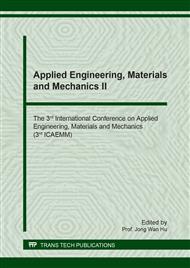p.255
p.260
p.265
p.271
p.278
p.287
p.292
p.299
p.305
Research on Application of Solar Semiconductor Cold Wall in Near-Zero Energy Buildings
Abstract:
With the speeding up of urbanization and growth of national economy, housing industry has developed rapidly in recent years, the residential building energy saving problem has been increasingly outstanding, according to the study, the future China building energy consumption ratio will rise to about 35%. At present, building energy conservation has become one of the recognized effective ways to solve the increasingly serious energy problems. Through the study of the near zero energy building in the hot summer and cold winter area,the thermal comfort of the near zero energy building was satisfied by using the semiconductor cold and hot wall system,the practical effect and operation parameters of the semiconductor cooling wall were given. It was presents a series of Suggestions and improvement Suggestions for the research and energy conservation work of near zero energy buildings in hot summer and cold winter area.
Info:
Periodical:
Pages:
278-283
Citation:
Online since:
July 2018
Authors:
Price:
Сopyright:
© 2018 Trans Tech Publications Ltd. All Rights Reserved
Share:
Citation:


